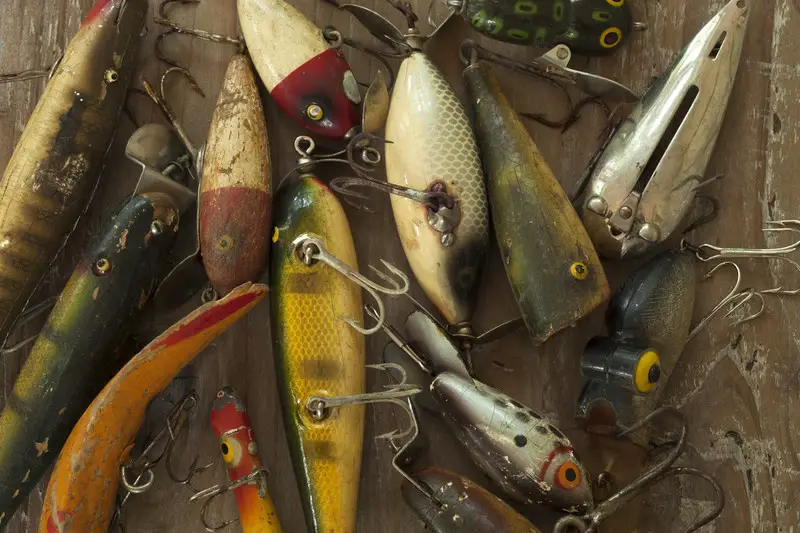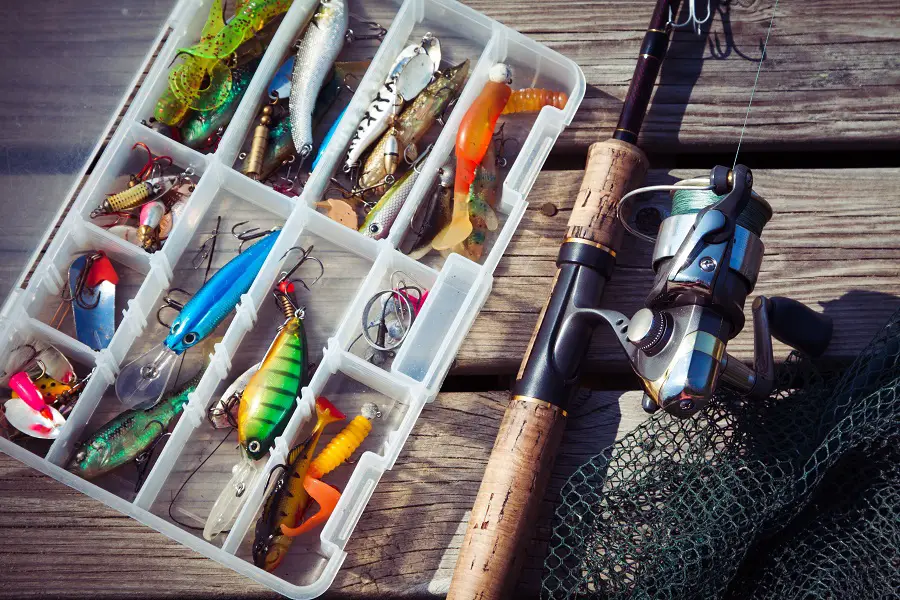If the fishing mini-game in The Legend of Zelda: Ocarina of Time were anything at all like fishing in real life, I would be a legendary angler. Unfortunately, actual fishing is far from one of my favorite video game past times, since there are many more complications and supplies you’ll need than real fishing.
That doesn’t mean I haven’t had a handful of fishing trips with friends.
There are the obvious supplies you must pack in your fishing backpack – a fishing line, hooks, bait – but there are also a litany of things you probably wouldn’t think about bringing along at first, but which I highly recommend.
10 Items to have on your Fishing Backpack Checklist
1. Extra line
You might have caught an epic-sized wrangler, or you might have just had your hook snagged on a piece of driftwood. Either way, you are going to want to bring as much extra line with you as you can. You will want to be prepared in case your line breaks or if you have to cut your line, you won’t want that to stop your fishing time, now do you?
The specific kind of line that you are looking for is going to depend on many factors. If you will be fishing in harsh, rugged weather, you should bring a line that is durable and heavier than your average type of line. Take any precaution you can in order to reduce the chances of your line snapping.
However, if you are looking to fake-out the fish and remain a stealthy fisher, you should go for some line that’s thinner, lighter and more transparent, so it will make less movement in the water and is less visible to the fish.
2. Extra hooks

Sometimes your fish might swallow the hook. Or you might get the hook caught in seaweed or a tree branch over your head. Things happen, so you need to be prepared with extra hooks, in case you should lose one.
Stock your fishing tacklebox with a wide range of different types of hooks. I generally stay loyal to the old-fashioned, tried-and-true J-hook, but there are tons of real fishers who prefer the French hook. Also, be sure to keep many different sizes, so you can use the hook that’s most suitable to the size of your catch.
3. Bobbers
If you’re cheap, you might just wait until you feel the line pull before you know you’ve gotten a fish, but that’s just a guessing game – you don’t want to turn up a piece of driftwood, do you? That’s where bobbers come in.
The bobber is a brightly colored bulb that you attached to your line before casting it out. You watch the bobber floating on the water – when the bobber goes under the water, you know you’ve caught a fish. Brilliant, isn’t it?
I highly recommend stashing your tacklebox with bobbers. The only disadvantage of a bobber is that it limits how far down in the water your hook can sink.
4. Sinkers
Are you looking to catch yourself a large fish at the bottom of the lake or ocean? A mere line, hook, and worm are too light to sink that far in the water – that’s when you should attach a sinker. A sinker is a weight that drives the hook down to the deeper levels where the largest fish lurk.
Be cautioned – you can’t use a bobber if you’re also using a sinker, vice-versa. Sinkers also have a risk of getting your hook caught on seaweed, rocks, wood or other obstructions at the bottom of the water.
5. Plastic worms
I prefer to use live bait when I fish, but it’s never a bad idea to stash some extra plastic worms. They are especially useful for bass fishing. The worms come in nearly any color, and in fact, some fishers claim there are some colors that fish are more attracted to, but I’ve never heard a real consensus on the issue, so pick whichever color you like.
6. Several lures

If the good old-fashioned hook and worm or a plastic worm aren’t good enough to catch your desired type of fish, you should pack some special lures. There are hundreds of types of lures: imitation minnows, spinners, and spoons, or even topwater lures. Larger fish will be attracted to a bait that looks like smaller fish.
7. Needle nose pliers
You will really want a pair of needle-nose pliers to remove the hook from the fish’s jaw after you’ve caught it. Or you could just use your bare hands to rip it out.
8. A small first aid kit

Bad things happen. You get your hook caught in your thumb – or your ear. Or you fall on the deck and scrape up your shins. You’re going to want to pack a first aid kit for these painful incidents.
It probably won’t help you much if disaster strikes and there’s a terrible injury – you’ve hooked your son’s eyeball out of his head – but a bit of Neosporin and bandaids will help with the small injuries.
9. Bug spray
Because there is literally no better way to keep your sanity than to bring bug spray with you on your fishing trip. When you are sitting on the shore, or you are out in the middle of the lake, there are sure to be bugs everywhere.
Absolutely nothing ruins a perfectly good fishing trip like the maddening whine and tickle of flies next to your ear, or constantly swatting and slapping mosquitos off your neck.
10. Fishing shirt
I made the mistake once of spending a bright, hot sunny day out on the lake fishing — shirtless. My entire upper body was burned into one big blister, and I was bedridden for more than a week. I could have infected myself with skin cancer if I had been less lucky.
So cover yourself up properly with a fine-quality fishing shirt. The fishing shirt will block the sun’s rays and keep you from becoming a burnt, peeling, cancerous mess. You should choose a color such as green or blue that will blend in with your surroundings.
Final Thoughts
So there you have it. My version of Fishing Backpack Checklist. It is what I’ve always packed in my fishing backpack whenever I’m out for a fishing trip.
There are definitely other things that I will need but I’ve decided not to mentioned it as it is random regular items such as my phone and such. Hope you find the Fishing Backpack Checklist useful and may it guide you. Happy Fishing!
Leave a Reply